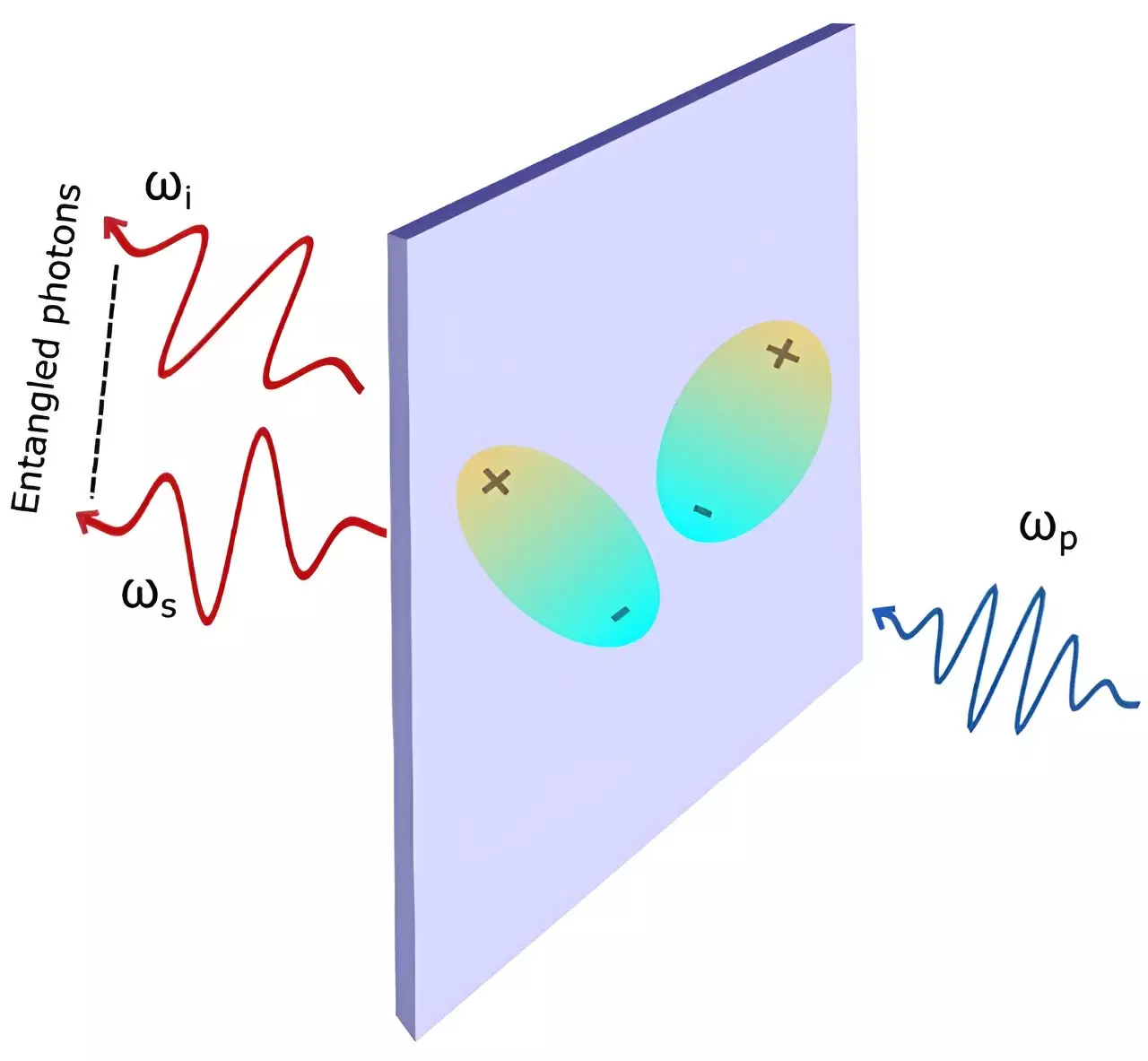Excitonic interactions have been shown to play a significant role in increasing the efficiency of generating entangled photon pairs, leading to the development of efficient ultrathin quantum light sources. This breakthrough research has the potential to revolutionize the field of quantum technologies and pave the way for next-generation devices. Let’s delve deeper into the impact of excitonic interactions on quantum light sources.
Excitons are pairs of opposite charges that arise from the fundamental excitations in a crystal when light interacts with it. These excitonic interactions between negative and positive charges can enhance the efficiency of spontaneous parametric down-conversion (SPDC), a process used to generate entangled photons. The research team at the National University of Singapore has shown that when these charges are closer together, the efficiency of SPDC increases significantly, depending on the energy or frequency of the light.
The efficiency of SPDC can be enhanced by harnessing many-body excitonic interactions present in non-linear optical crystals. By utilizing fully quantum mechanical calculations to analyze the non-linear optical response of crystals to incident light and account for excitonic effects, the research team was able to make groundbreaking discoveries. Dr. Fengyuan Xuan, the lead author of the study, emphasized the importance of considering the interaction between negative and positive charges in enhancing the efficiency of SPDC.
One of the key findings of the research is the potential of using ultrathin crystals as efficient sources for producing entangled photons. While ultrathin crystals were previously avoided for SPDC due to a perceived decrease in efficiency with material volume, the stronger excitonic interactions in these crystals can actually alleviate this effect. This opens up new possibilities for integrating ultrathin crystals into hybrid quantum-photonic platforms for the creation of next-generation devices.
The research team applied their theoretical approach to NbOI2, a layered non-linear optical material, to study both SPDC and second harmonic generation (SHG). By simulating SHG intensities based on the polarization angle of incident light, they were able to validate their results against previously published experimental work. The team also found that excitonic enhancement is particularly strong when the frequency of the “pump” beam closely matches an excitation frequency in the crystal.
These groundbreaking discoveries pave the way for the widespread use of ultrathin materials in generating entangled photons for quantum technologies. The potential for integrating ultrathin crystals into next-generation devices holds immense promise for advancing the field of quantum photonics. Prof Quek, the lead researcher, envisions a future where ultrathin crystals are seamlessly integrated into quantum-photonic platforms, revolutionizing the way we harness quantum light sources for a wide range of applications.
The impact of excitonic interactions on quantum light sources cannot be overstated. By understanding and harnessing these interactions, researchers are opening up new possibilities for the development of efficient and reliable quantum technologies. The future of quantum photonics looks brighter than ever, thanks to the groundbreaking work being done in this field.


Leave a Reply